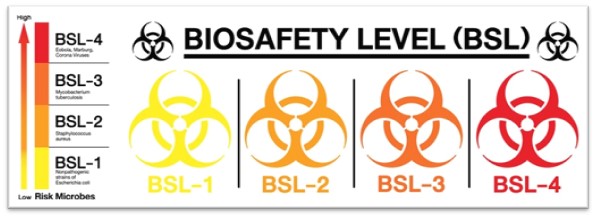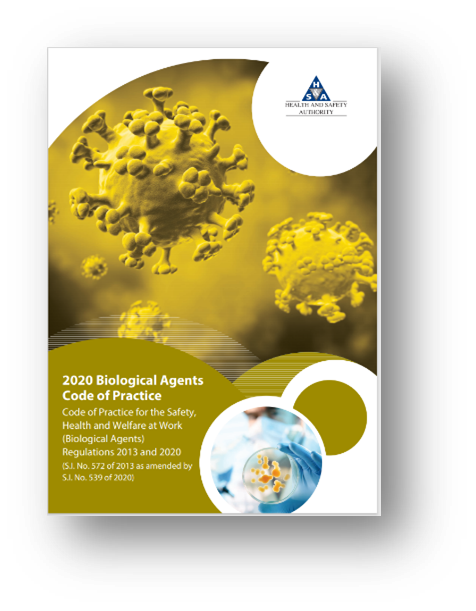Written by CMSE Health & Safety Consultant Aisling Hegarty
Since the COVID-19 pandemic began, the subject of biosafety and biosecurity has garnered attention around the world. This is largely based on the theories surrounding the laboratory origin of SARS-CoV-2, the virus which caused COVID-19. Nonetheless, biosafety has always remained a crucial element for research and biotechnology industries working with biological agents. A recently published article by Kings College London has revealed that only 25% of Biosafety Level (BSL) 4 labs around the world, handling the most dangerous pathogens, received high scores in biosafety. BSL-4 labs are containment facilities designed to handle the most pathogenic biological agents. The outcome of the analysis suggests an improvement in bio risk management and biosafety is required.

So what is biosafety?

The Safety, Health and Welfare At Work (Biological Agents) Regulations defines a “Biological agent” as “micro-organisms, including those which have been genetically modified, cell cultures and human endoparasites, which may be able to provoke any infection, allergy or toxicity…”
Biological agents are classified into 4 risk groups according to their level of risk of infection, as follows:
- a “group 1 biological agent” means one that is unlikely to cause human disease to employees;
- a “group 2 biological agent” means one that can cause human disease and might be a hazard to employees, although it is unlikely to spread to the community and in respect of which there is usually effective prophylaxis or treatment available;
- a “group 3 biological agent” means one that can cause severe human disease and presents a serious hazard to employees and that may present a risk of spreading to the community, though there is usually effective prophylaxis or treatment available;
- a “group 4 biological agent” means one that causes severe human disease and is a serious hazard to employees and that may present a high risk of spreading to the community and in respect of which there is usually no effective prophylaxis or treatment available.
It is important for employers to note where work involving, or is likely to involve, exposure to Group 2, 3 or 4 biological agents, a notification must to be made to the Health & Safety Authority in advance of the work commencing.
When handling biological agents, the containment level (also referred to as biosafety level – BSL-1 to BSL-4) must be considered. These are safe methods for managing biological agents in the laboratory environment with the aim of reducing or eliminating exposure to employees. The containment level must be determined by the biological agent risk assessment. The minimum containment levels for each biological agent group are as follows:
- Containment Level 2 [CL2] when handling a group 2 biological agent.
- Containment Level 3 [CL3] when handling a group 3 biological agent.
- Containment Level 4 [CL4] when handling a group 4 biological agent.
CL4 is the highest level of containment with increased isolation and more stringent controls in place to prevent exposure to personnel.
Why is biosafety important?
As previously mentioned, the aim of biosafety is to prevent harmful exposure from the use of biological agents to employees in the workplace. Some of the ways this can be achieved is through the following practises:
- biological agent risk assessments– assess the risk from use and presence of the biological agent in the workplace and identity the control measures to reduce the risk.
- containment measures to reduce or eliminate exposure to potentially hazardous biological agents
- safe work procedures such as standard operating procedures (SOPS)
- good microbiological and hygiene practices
- training, information and awareness when working with biological agents
- review and update risk assessments
- record keeping – employer must keep records of all person exposed to Group 3 or Group 4 (or both) biological agents for at least 10 years after the last known exposure.
- health surveillance programme (where necessary)
While all the above are necessary for an efficient biosafety programme, it is important to remember the consequences of failure in biosafety can be substantial. Studies over the years have shown that exposure to biological agents have caused the greatest number of laboratory acquired infections to personnel. For example, exposure to Salmonella Typhi (a Group 3 biological agent) via the ingestion route, can cause Typhoid fever with symptoms that can range from mild (fever, vomiting) to very severe (gastrointestinal haemorrhage). It is therefore essential that organisations maintain and adhere to an effective biosafety programme.
CMSE Consultancy provide professional services for biosafety in the workplace.
If you require further information or assistance please contact us via email at info@cmse.ie, by phone at 021 497 8100 or start an instant chat with us via the chat box in the bottom right-hand corner of your screen.
